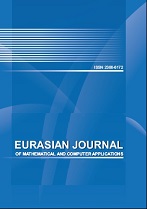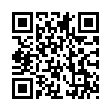|
Quasi-isometric almost orthogonal grids
G. A. Chumakov
Sobolev Institute of Mathematics, Pr. Akad. Koptuga 4, Novosibirsk 630090
Abstract:
A special class of quasi-isometric mappings for construction of regular coordinate systems is proposed. The main strategy of the approach is to decompose a given physical domain into five non-overlapping subdomains whose boundaries are automatically generated in solving a variational problem. Four blocks, containing four corners of the boundary of the physical domain, are the conformal images of geodesic quadrilaterals on the surfaces of constant curvature. In each of these blocks, a quasi-isometric grid is constructed. Orthogonality of the coordinate lines is maintained in the fifth block that is a conformal image of a nonconvex polygon consisting of several rectangles on the parametric plane. In order to ensure the equality of internal angles of the physical curvilinear quadrangle and its conformal preimage, we consider the canonical domains, in the corners of which the geodesic quadrangles with three right angles are glued in. The fourth angle of each geodesic quadrangle glued in is
equal to one of the angles of the physical domain. We construct the geodesic quadrangles on a sphere, Euclidean plane, or Lobachevsky plane in dependence on whether the corresponding internal angle of the physical domain is obtuse, right, or acute. We propose a robust algorithm of construction of a one-parameter family of canonical domains, the conformal module of which monotonously changes from zero to infinity, and prove the theorem that for every physical domain there exists a unique preimage belonging to this one-parameter family such that a conformal mapping of this canonical domain onto the physical domain has a bounded derivative up to the boundary of the domain. Applying this mapping to construction of curvilinear coordinate in the physical domain, we obtain a grid that is orthogonal far from the corners of the curvilinear quadrangle.
Keywords:
quasi-isometric grid, conformal mapping, nearly orthogonal grid, variational approach, non-Euclidean geometries, geodesic quadrangle.
Citation:
G. A. Chumakov, “Quasi-isometric almost orthogonal grids”, Eurasian Journal of Mathematical and Computer Applications, 7:4 (2019), 18–43
Linking options:
https://www.mathnet.ru/eng/ejmca141 https://www.mathnet.ru/eng/ejmca/v7/i4/p18
|

| Statistics & downloads: |
| Abstract page: | 70 | | Full-text PDF : | 33 |
|




 Contact us:
Contact us: Terms of Use
Terms of Use
 Registration to the website
Registration to the website Logotypes
Logotypes








 Citation in format
Citation in format 